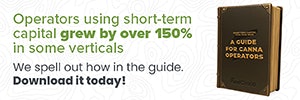
All cannabis businesses need insurance in some form, and knowing which exposures exist for a company can help operators decide which coverages they need, says Mike Bush, partner at National Cannabis Insurance Services.
Here, Bush helps take some of the guesswork out of choosing the policy that’s right for you by explaining the common types of insurance coverage that might apply to your cannabis business.
1. Business Auto Policy (BAP)
A business auto policy covers the business from an auto accident where there is bodily injury or property damage to a third party and the business is at fault. The coverage extends to hired and non-owned coverage, which covers the business if employees drive their personal vehicle for business use or if the company subcontracts delivery drivers, Bush says.
2. General Liability (CGL)
A general liability policy pays sums to your business if the company becomes legally obligated to pay damages from bodily and property damage. The CGL policy covers bodily injury and property damages that occur on your premises or due to your products or operations, as well as medical payments and limited medical expenses, regardless of fault. It also covers personal and advertising injury due to defamation, slander, libel or infringement, Bush says.
3. Product Liability
Product liability insurance may be included with a CGL policy, or it may have to be purchased separately, Bush says. Areas of exposure include warning labels, impairment, breach of contract and product recall, among others.
“Much like the liability imposed on an establishment selling liquor, the pitfalls are everywhere,” Bush says.
A major concern with cannabis products is impairment, but a manufacturer, distributor or retailer is also considered liable if a defect in the manufacture or design of a final product causes injury when the product is used in a reasonable way. Strict liability has also been invoked for warning label defects, where there is an inadequate warning or failure to warn that a product can cause impairment or psychoactive effects, Bush says.
4. Crop
Crop insurance protects a cultivator’s crop throughout the growing cycle, insuring against indoor and outdoor hazards such as fire, soot, water and temperatures, Bush says. However, coverage does not extend to crop failure due to mold, rot, disease or fertilization issues, which are normally not covered on any property or crop policies, even in traditional agricultural, he adds.
5. Property
Property coverage covers losses to buildings, personal property, business income and machinery due to hazards such as fire, water, explosion, theft and vandalism, Bush says. Some cannabis businesses must transport their own finished stock, and the vehicles carrying product become targets for theft, which property coverage can protect against , as auto policies usually do not cover theft, he adds.
6. Builders Risk
Builders risk insurance covers losses to buildings and equipment during construction, Bush says. Policies cover loss of materials and buildings during the construction of an indoor grow or greenhouse, as well as property in transit or property at an unspecified location. Permanent and temporary works are considered covered property under a builders risk policy, and covered causes of loss include fire, lightning, vandalism, sprinkler leakage, sinkhole collapse and volcanic eruption.
7. Excess Liability
Excess liability insurance can be purchased to go above and beyond your general liability policy to cover losses that may exceed your underlying policy, Bush says. Put simply, it provides additional coverage when an underlying policy has reached its limit in the event of large, unexpected risks. Excess liability sits over other liability policies and typically follows the same coverages, conditions and exclusions of the underlying policy.
8. Workers Compensation
Workers compensation protects your employees when they are injured on the job, Bush says. The policy covers three primary areas: accidental death or dismemberment, medical expenses and lost wages.
9. Cyber Liability
Cyber liability coverage protects your business from cyber threats and data breach events, Bush says. It provides coverage for a variety of liability and property losses that may result when a business collects personal information or sells products over the internet, such as notification costs, credit monitoring, costs to defend claims by state regulators, fines and penalties, and loss resulting from identity theft. Cyber liability policies can also cover exposures from business interruption, data loss or destruction, computer fraud, funds transfer loss and cyber extortion.
The most common cyber exposure is a business’s liability for a data breach, where customers’ personal information is exposed or stolen by someone who has hacked into the company’s electronic network, Bush says.
10. Employment Practices Liability
Employee practices liability coverage protects you from claims involving wrongful termination, discrimination and harassment, Bush says. Additional exposures include wrongful discipline or demotion; failure to hire or promote; libel, slander, defamation of character or invasion of privacy; and wrongful infliction of emotional distress. Employee practices liability policies typically cover the legal defense fees and settlement costs or damages, so the employer does not pay for the cost of the claim.
Top Image: © alphaspirit | Adobe Stock














